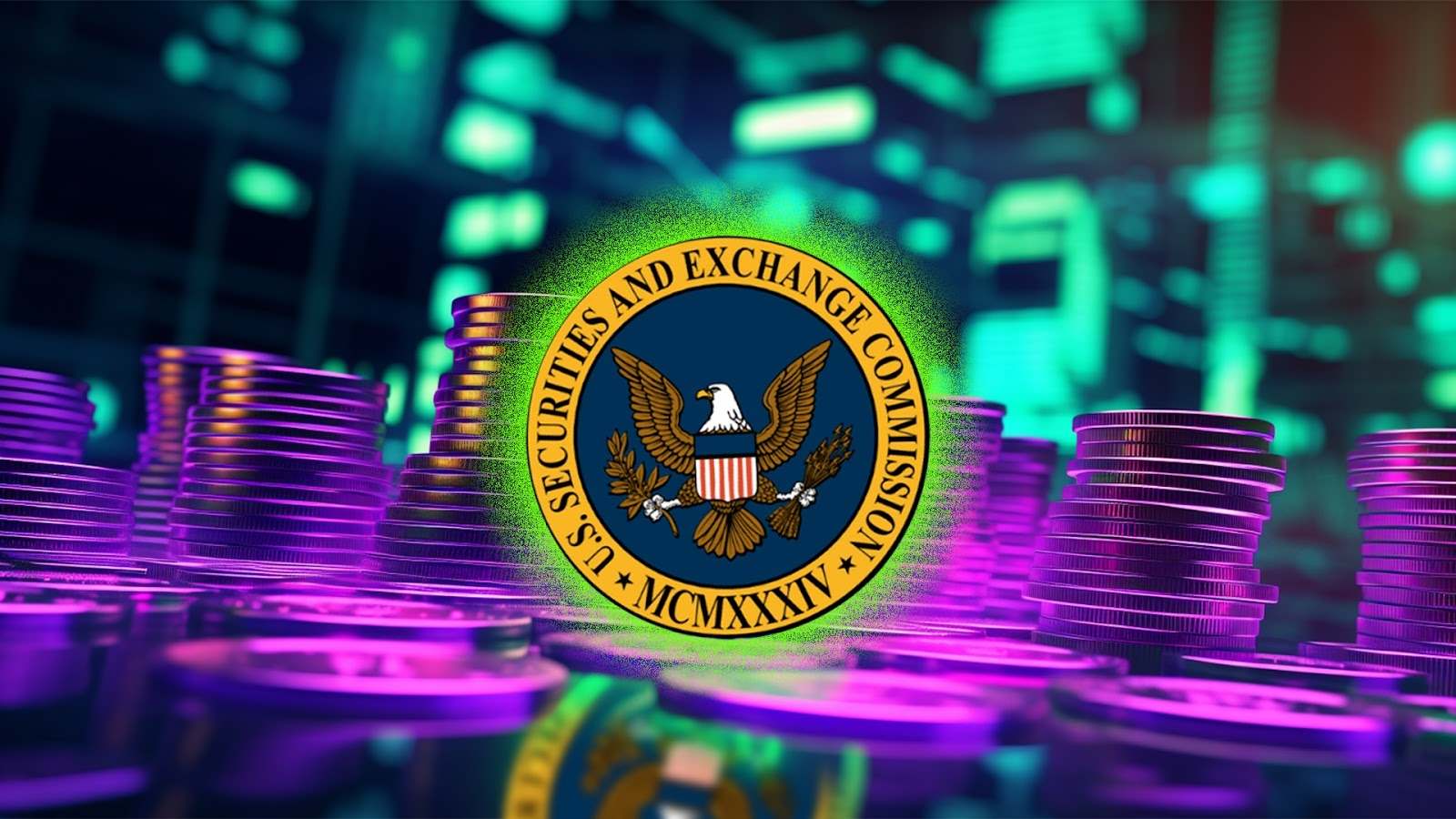
As you’ll already know, the US Securities and Exchange Commission (SEC) isn’t hesitant when it comes to meddling with crypto and altcoin ongoings, and now per a report from the Federal Reserve (Fed), it now appears that it’s coming for stablecoins.
Such speculation has arisen from a Fed New York branch-published report entitled ‘Runs and Flights to Safety: Are Stablecoins the New Money Market Funds?’.
As its name suggests, the report alleges that stablecoins are a risk to the financial sector through their similarities with money market funds (MMF) ‘breaking the buck’.
Further, MMFs are classed as securities that are therefore regulated by the SEC… meaning as intuition would suggest, the report emits a rhetoric that invites stablecoin regulatory scrutiny from such body.
Stablecoins & Money Market Funds
When it comes stablecoins, most are backed by US government debt - therefore making them similar to MMFs which are also backed by the same asset class.
For context, MMFs involve the purchase and sale of large volumes of very short-term debt, such as overnight reserves or commercial papers. They are also designed to be pegged to the dollar.
Here, a key difference between stablecoins and MMFs is that the latter shares some of the yields on its reserves with holders.
Nonetheless, what these similarities imply is that both types of financial instruments are vulnerable to runs - that is, if everyone suddenly asks for all their money at the same time, they’d have to sell their reserves in order to meet withdrawal demands. Of course, here also lies the possibility of withdrawal demands not being met, especially if sales have to be made at losses.
In turn, ‘runs’ are what cause stablecoins to fall below their dollar pegs (i..e depegging). This is what the crypto space saw earlier this year with regards to Circle USDC (USDC), the stablecoin that depegged to $0.87 in March due to its exposure to the collapse of Silicon Valley Bank (SVB).
The only - rather large - caveat here is that SVB was the one experiencing a bank run, however all was resolved for USDC once SVB was bailed out… so nothing was really crypto’s fault here.
Another link between the two financial instruments is that a large portion of stablecoins in circulation are technically backed by money held in MMFs - where for example, more than 10% of Tether USD (USDT) is backed by money sitting in money market funds, whilst over 90% of USDC in circulation is backed by money held in the BlackRock-managed Circle Reserve fund.
With their two heavy links to US debt, the two realms also face risks when it comes to the US government raising the debt ceiling.
Rhetoric Framing & Findings
The report states that the total market cap of the stablecoin industry has skyrocketed over the past four years - from $5 billion in 2019 to over $125 million in April 2023. And when it comes to MMFs, these have doubled over the past decade to now be worth a whopping $5 trillion.
It also categorises stablecoins into two types: those that are US based, and those that aren’t (i.e. offshore). Going even deeper, it then adds three more categories based on whether they’re backed by traditional assets, crypto, or algorithmically. Further, over 96% of stablecoins are said to be backed by traditional assets - which as previously mentioned, is mainly comprised of US debt.
When referring to stablecoin issuers such as Circle, Paxos, and Tether, the report implies that they are companies, which further adds to the rhetoric that their tokens are securities that must be regulated.
It also refers to precious metals such as gold as ’risk assets’ in the context of reserves - a statement that contradicts the fact that central banks have reportedly been acquiring gold at record levels over the past few years.
Run Risks
The report analyses the ‘run risk’ of money market funds - i.e. a scenario where a crisis prompts investors to pull their money from risky MMFs into less risky MMFs. This primarily entails switching from private assets to US government debt.
For context, MMFs ‘broke the buck’ in 2008 and March 2020, wherein MMFs of the private asset accord caused both of these occurrences. For stablecoins, ‘depegs’ have occurred in May 2022 (regarding TerraClassicUSD (USTC)) and USDC in March 2023.
Whilst analysing near-enough all stablecoins on the market, the report looked at how stablecoins react to periods of stress within the crypto market (which refers to the days in which Bitcoin (BTC) feels abnormally large losses). Here, algorithmic and crypto-backed stablecoins saw larger outflows than offshore stablecoins, where on the flip side, onshore stablecoins experienced inflows due to investors flocking towards ‘more stable’ investments.
Such research into the inflows and outflows of stablecoins throughout depegging events arose as the Fed wanted to see if such a dynamic was similar to ‘breaking the buck’ events of MMFs. Here it had a special interest in people who’d move money within the same institution
What they found is that on large blockchains, flows moved from algorithmic and crypto-backed stablecoins towards onshore stablecoins. Or in the case of USDC’s depegging, flows moved from onshore to offshore stablecoins.
On smaller blockchains however, inflows and outflows remained the same regardless of the stablecoin type. This means that crypto holders deem smaller blockchains as inherently riskier than larger ones in times of stress.
Per the report’s findings, stablecoin holders begin to panic when the coin drops to $0.99, as this is what many deem as an official depeg. Interestingly enough, a $0.99 depeg only indicates outflows of 3%.
In contrast, outflows of a fraction of a percentage in MMFs are said to be substantial enough to warrant mass flows and a ‘breaking of the buck’. With this consensus, we can derive that stablecoin holders are less prone to panicking than their TradFi counterparts, however ‘breaking the buck’ tendencies still do occur.
Crypto Impacts
When it comes to what the rhetoric behind this report may mean for the crypto space, the Fed summed it up quite nicely with the following quote:
“Should stablecoins continue to grow and become more interconnected with key financial markets, such as short-term funding markets, they could become a source of financial instability for the broader financial system”.
…In other words, a SEC regulation crackdown on stablecoins could be on the horizon.
Further, if stablecoin regulation is going to be funnelled away from the Fed and into the jurisdiction of the SEC, the tangible outcome may be determined by who holds more influential sway within the SEC; asset managers like BlackRock or mega banks.
This is because both asset managers like BlackRock and mega banks have significant influence over the decisions of regulators such as the SEC… however the SEC can only satisfy one of them.
This is because whilst the former manages most of the USDC reserves (something it also makes money from), mega banks would like to see the $100 billion backing stablecoins back in their hands (and not in shadow banks or other assets). In other words, one is pro-stable coins (of the onshore variety) and one isn’t.
However before we get to this conundrum, we first have to receive confirmation of the Fed passing the stablecoin regulatory baton onto Gary Gensler and the SEC. After this, then may we contemplate the possible centralisation-clampdown on crypto’s most stable assets.
Want More Cutting-Edge Crypto News?
Follow Us: X TikTok Instagram Telegram LinkedIn
Sign up to our newsletter at the bottom of the page
Check Out Our Top 10 Crypto Currencies of 2023
This article is intended for educational purposes and is not financial advice.


















